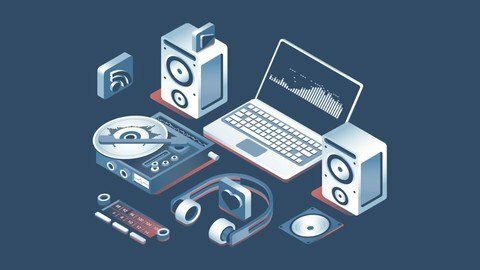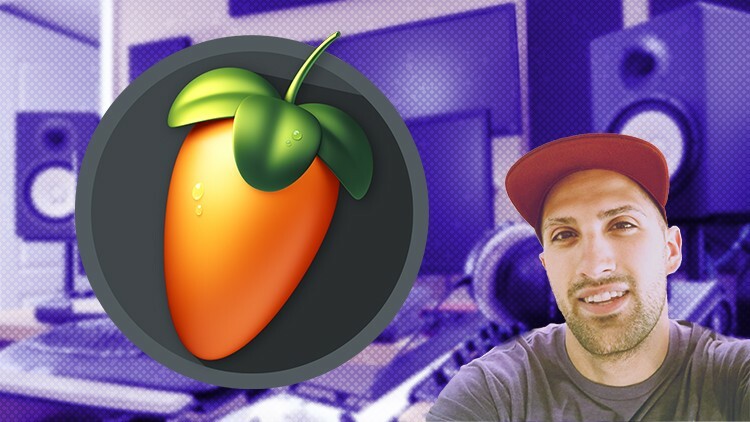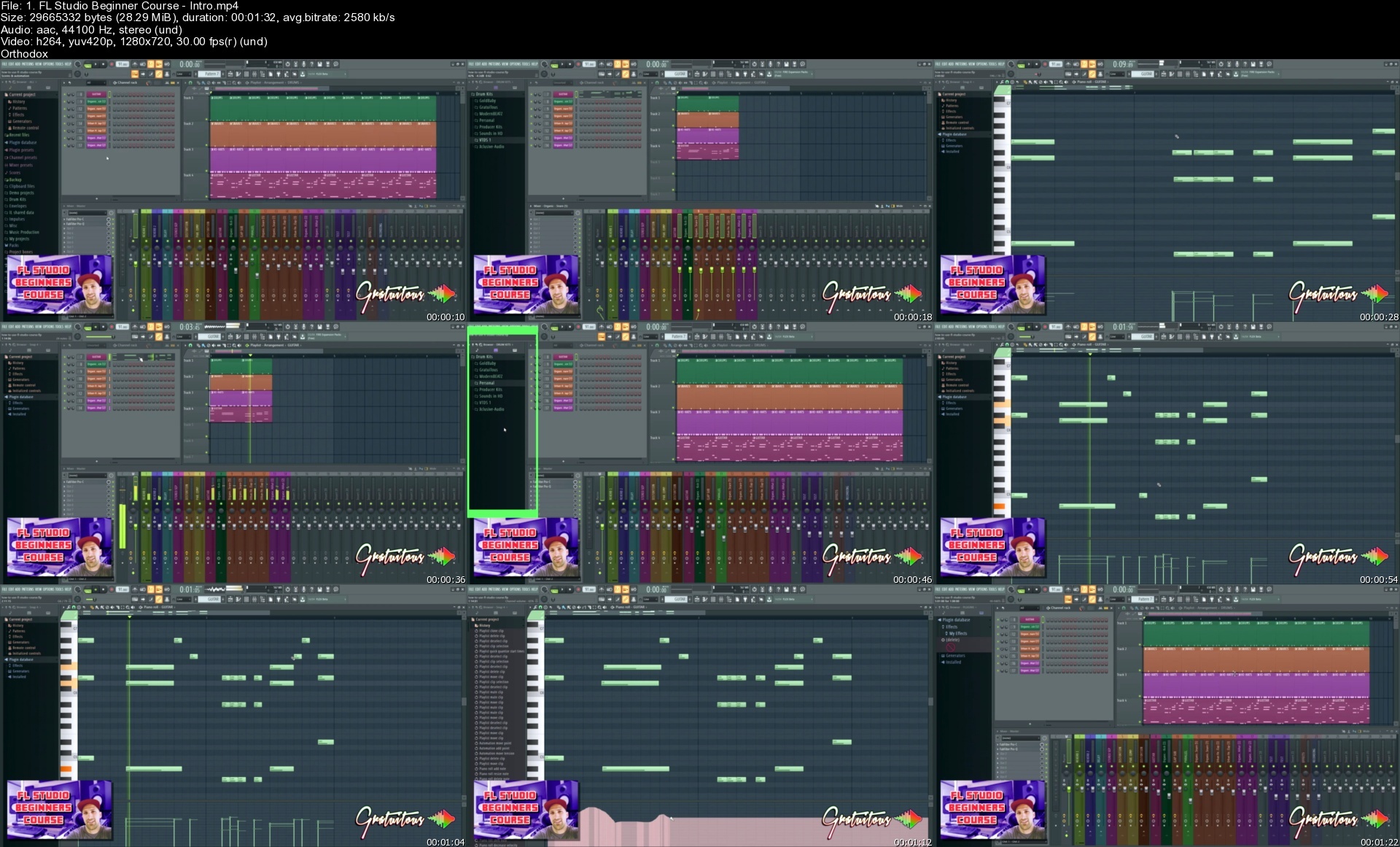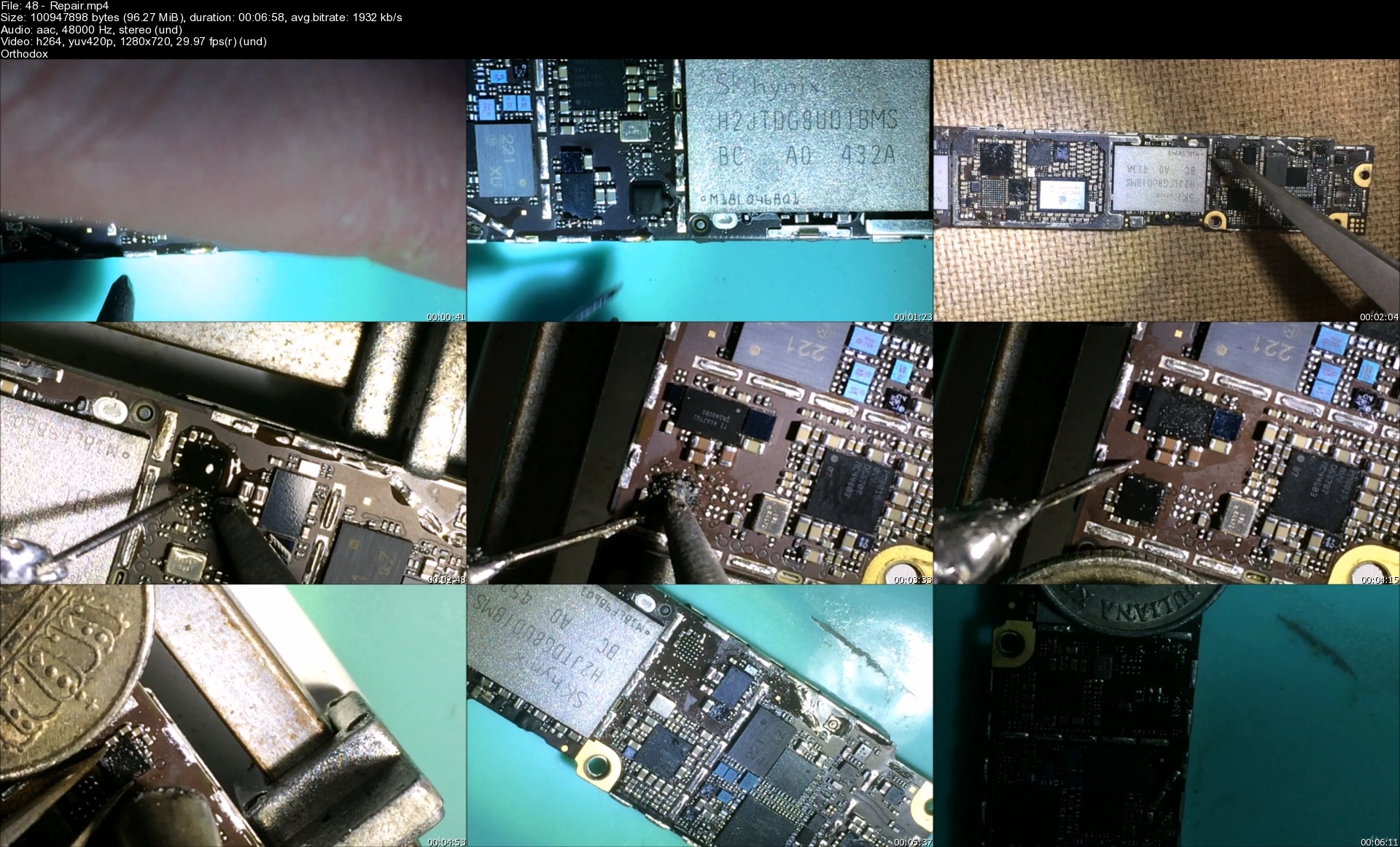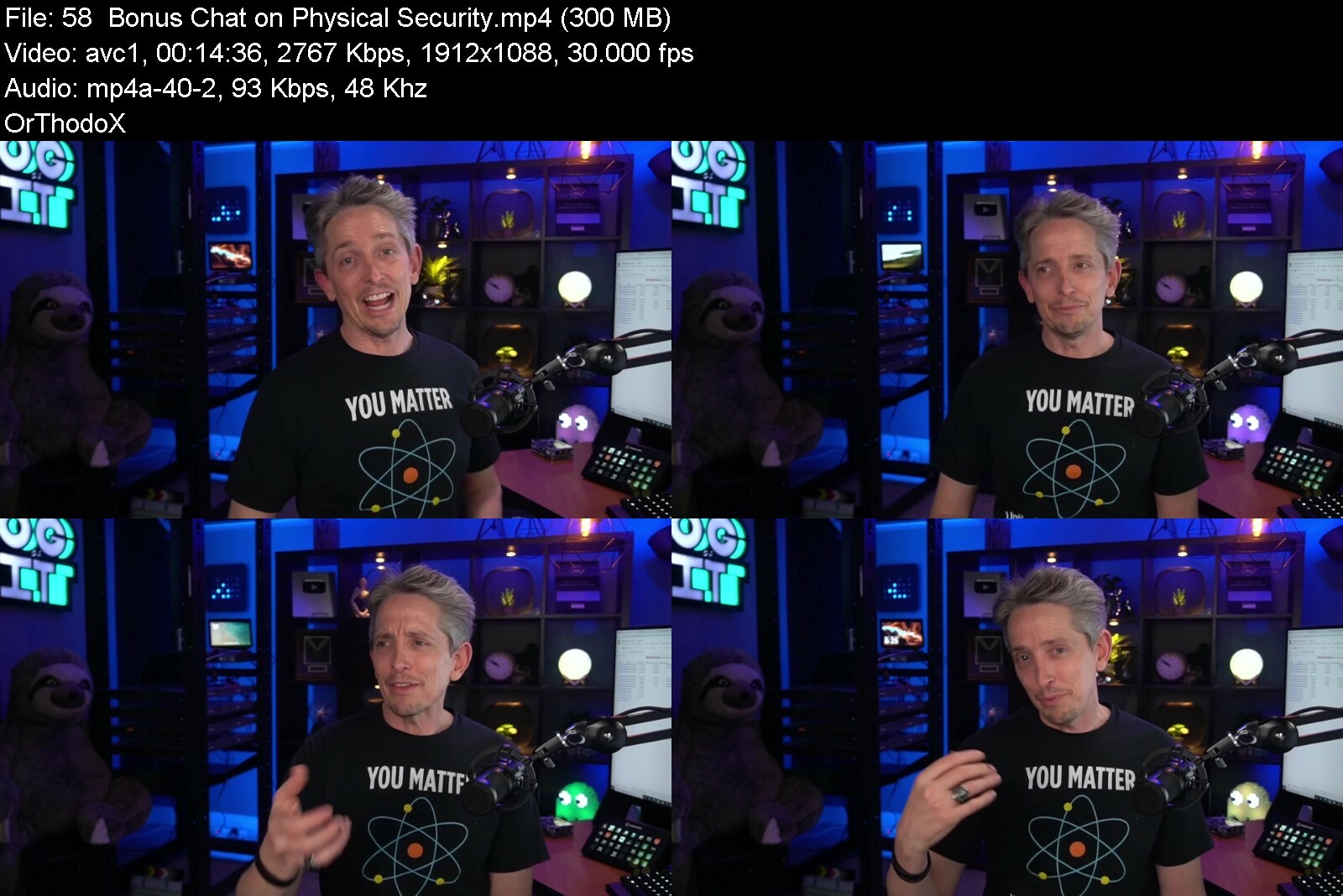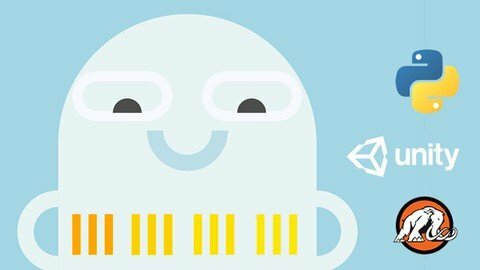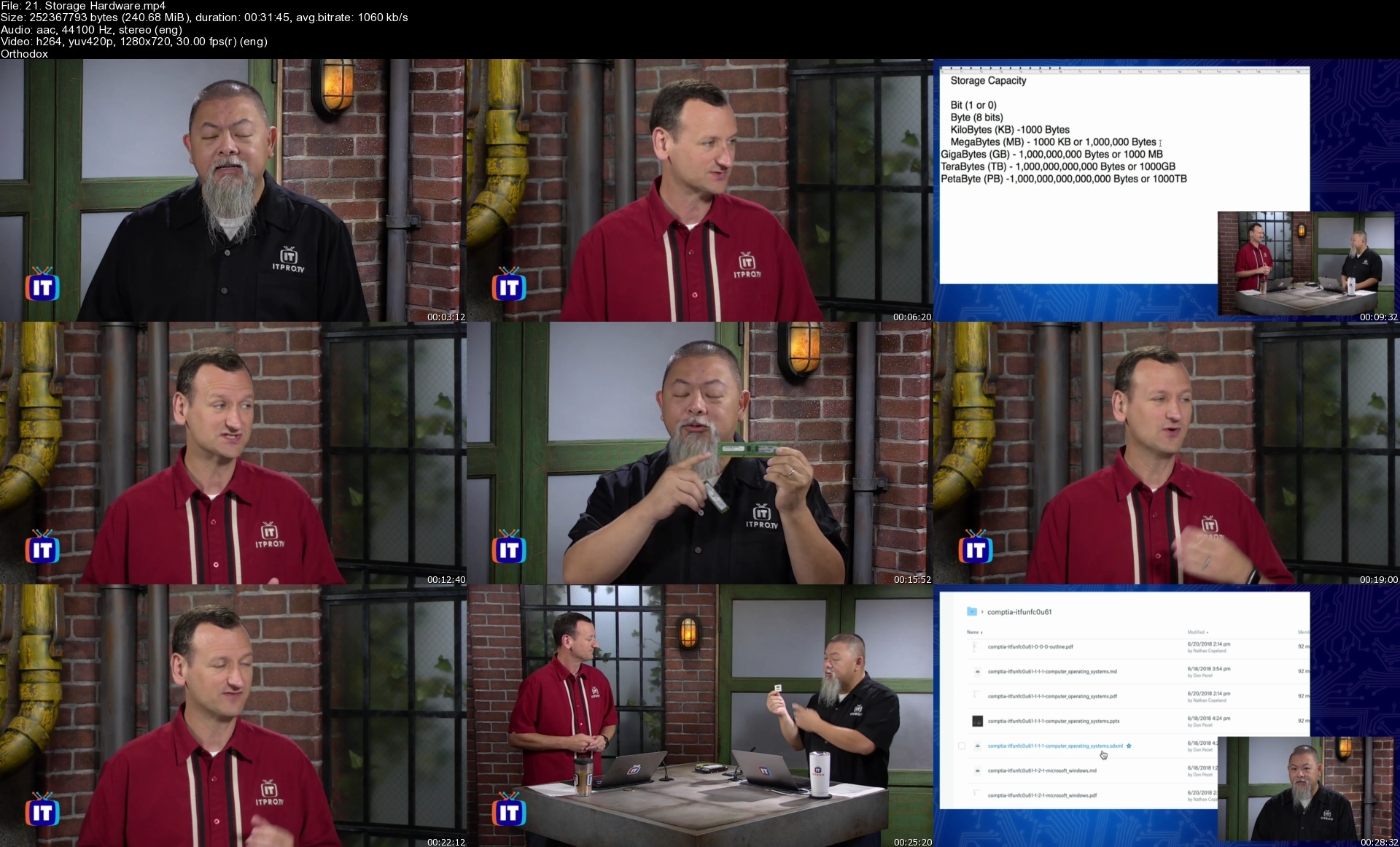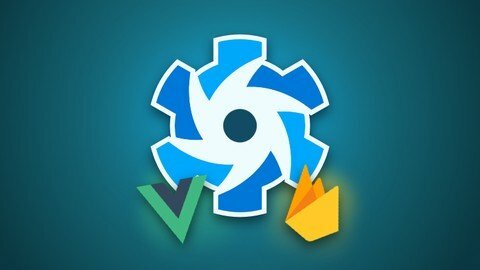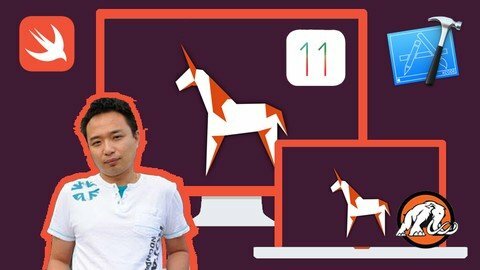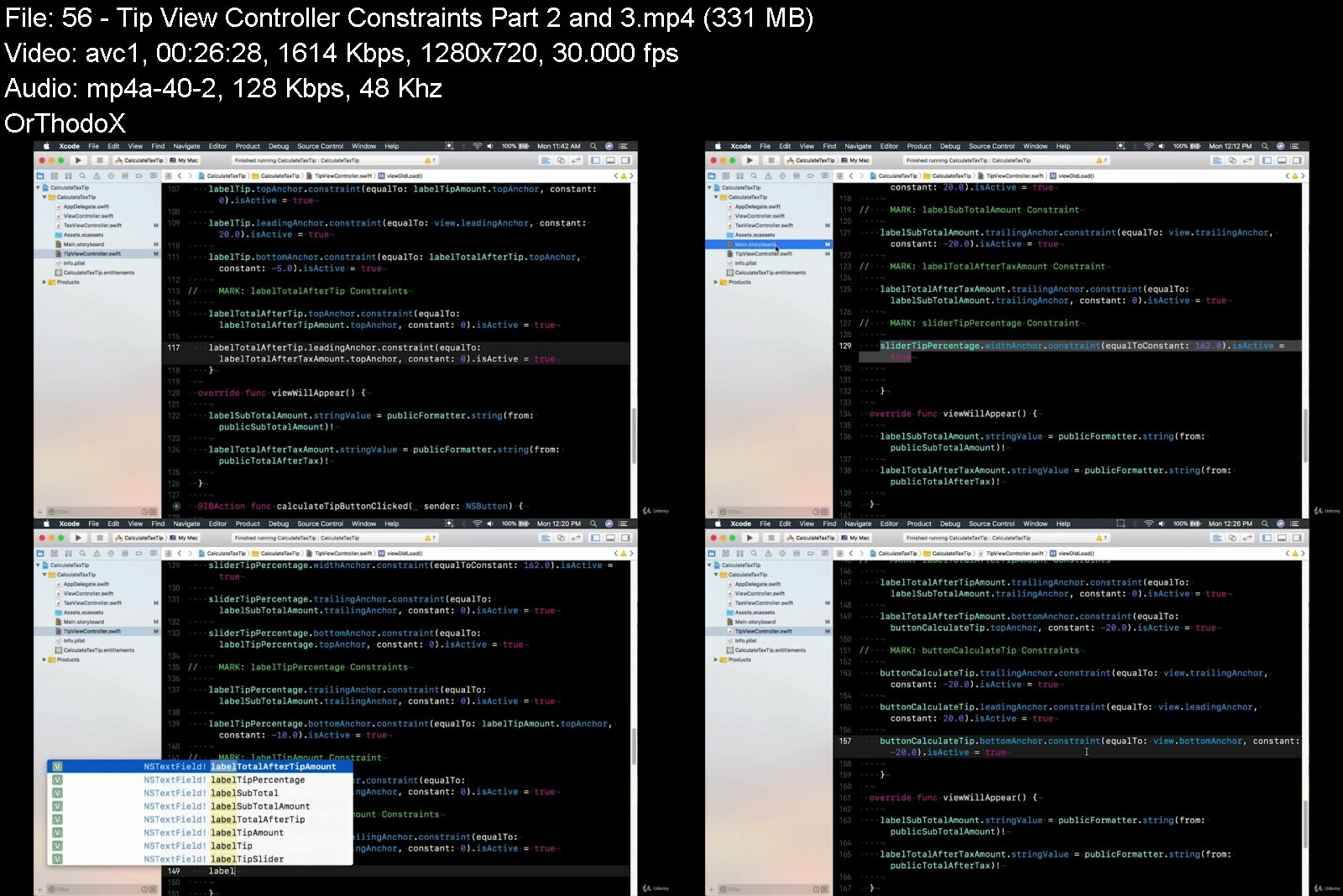OP
Member
LEVEL 7
160 XP

Make Games And Web Apps: Unity®, React And Redux Masterclass
Last updated 12/2017
MP4 | Video: h264, 1280x720 | Audio: AAC, 44.1 KHz
Language: English | Size: 5.93 GB | Duration: 35h 7m
*includes FREE book! Build a SUPER MARLO RUN game in Unity®. Learn to code & 3D model. Make web apps in React & Redux.
What you'll learn
Code in C#
Make 3D models in Blender
Unwrap UV's and perform simple texturing of 3D art assets
Build a simple game that is easy to expand on
Lay out a web app in a logical way
Use JSX, a pre-processor that adds XML syntax to JavaScript
Build a single-page app using React Router
Code in ES6 and JavaScript
Use Web Pack, a bundler for code
Transition from webpack 1.0 to webpack 2.0
Write modular CSS
Use Redux, a predictable state container for JavaScript apps
Refactor code (alter code to make it simpler and more efficient)
Fix bugs and handle errors
Requirements
To follow along with the Unity® section, you will need the following programs: Blender (for 3D modeling), Photoshop or a free program like Gimp (for 2D art/texturing), and Unity® (for coding).
The tutorials were recorded on a Mac, but Blender, Photoshop, and Unity® can be used with a PC.
Please download and install Unity® and Blender before purchasing this course.
For the React and Redux section, please have a modern web browser
Basic HTML/CSS knowledge
Description
Want to be a web or game developer? Even if you have never coded before, with this course you can learn the foundations of making a 3D game and coding for the web!"This was a good match for me, I have some programming background. Might be a bit heavy for people without any programming experience. Good overall starter project with great examples of how to code properly from the start."
In Part 1 of this course, we build a 3D SUPER MARLO RUN game in Unity® - from scratch.
This course does not assume any prior knowledge and is perfect for beginners. In fact, we begin with an introduction to Unity® for those who have never used it before.
This course is unique because you will learn how to make your own 3D art, models, and textures in Blender. We will show you how to integrate the art into Unity.
By the end of Part 1, you will have a functioning runner game that you can build on to add your own project ideas!
In Part 2, you learn how to build beautiful, well-functioning web apps. Join web developer Chris Veillette to start coding for the Internet.
Included in this course is material for beginners to get comfortable with the interfaces. Please note that we reuse this material in similar courses because it is introductory material. You can find some material in this course in the following related courses
Build 43 Models & a 3D Runner Game in Unity® with C# Code Ultimate Guide to Blender & Unity: Game Design & DevelopmentMake a Fully Featured Game: Code in C#, Make Low Poly Models Build and model a Super MARLO runner clone in UnityMake a Unity Platform Game & Low Poly Characters in BlenderMake Games and Web Apps: Unity, React and Redux MasterclassIntroduction to React and Redux. Code Web Apps in JavaScriptComplete Modern Developer: React JS with Redux & SpriteKitComplete Developers Guide: Ruby on Rails & React with Redux
Why React?
React is an efficient and flexible JavaScript library for building user interfaces. Many popular websites including Instagram, Facebook, Netflix, and Imgur use React.
You can build your own web apps! This course is full of practical examples.
We teach you theory while also building real projects that you can put in your web development portfolio.
Your purchase includes the ebook "Build a Super Marlo Runner Game in Unity®" by Mammoth Interactive. Sign up right now to join the Mammoth community
Overview
Section 1: Introduction to the Course
Lecture 1 Course Trailer
Lecture 2 Gameplay from the Marlo Game
Section 2: 1. Introduction to Unity
Lecture 3 01 - Introduction
Lecture 4 02 - Unity Editor
Lecture 5 03 - Hello world!
Lecture 6 04 - Variables
Lecture 7 05 - Methods
Lecture 8 06 - Loops
Lecture 9 07 - Movement
Section 3: 2. Movement
Lecture 10 01 - Movement
Lecture 11 02 - Acceleration
Lecture 12 03 - Camera follow
Lecture 13 04 - Jumping
Lecture 14 05 - Jump higher
Lecture 15 06 - Jumping area
Lecture 16 07 - Multiple jumps
Lecture 17 08 - Wall jumping
Lecture 18 09 - Materials
Lecture 19 10 - Sticking to the wall
Section 4: 3. Blocks
Lecture 20 01 - Coins
Lecture 21 02 - Score
Lecture 22 03 - User interface
Lecture 23 04 - Bricks
Lecture 24 05 - Coin brick
Lecture 25 06 - Pause block
Section 5: 4. Speed blocks and enemies
Lecture 26 01 - Arrow design
Lecture 27 02 - Prefabbing the speed area
Lecture 28 03 - Speed area collision
Lecture 29 04 - Changing the player's movement speed
Lecture 30 05 - Property attributes
Lecture 31 06 - Long jump block
Lecture 32 07 - Simple enemy
Lecture 33 08 - Killing the player
Lecture 34 09 - Restarting the game
Section 6: 5. More enemies
Lecture 35 01 - Killing enemies
Lecture 36 02 - Designing the shell enemy
Lecture 37 03 - Shell
Lecture 38 04 - Shell movement
Lecture 39 05 - Designing the plant enemy
Lecture 40 06 - Plant movement
Section 7: 6. Power up and finish line
Lecture 41 01 - Adjusting shell collision
Lecture 42 02 - Designing a powerup
Lecture 43 03 - Powerup collection effect
Lecture 44 04 - Invincibility
Lecture 45 05 - Blinking effect
Lecture 46 06 - Different player models
Lecture 47 07 - Finish line
Section 8: 7. Background and interface
Lecture 48 01 - Background elements
Lecture 49 02 - Building the parallax logic
Lecture 50 03 - Mountain parallax
Lecture 51 04 - Cloud layer
Lecture 52 05 - Moving backgrounds
Lecture 53 06 - Jumping area adjustment
Lecture 54 07 - Main menu
Lecture 55 08 - UI Anchors
Lecture 56 09 - Game instructions
Section 9: 8. Fine Tuning
Lecture 57 01 - Smoothing box collisions
Lecture 58 02 - Changing the gravity
Lecture 59 03 - Wall jumping speed
Lecture 60 04 - Brick jumping
Lecture 61 05 - Shell collisions
Lecture 62 06 - Destroying the shell
Lecture 63 07 - Enemy jumping speed
Lecture 64 08 - Shell physics
Lecture 65 09 - Shell gravity
Lecture 66 10 - Horizontal shell adjustment
Lecture 67 11 - Horizontal shell adjustment 2
Section 10: 9. Level Design
Lecture 68 01 - Singleton
Lecture 69 02 - Saving current level
Lecture 70 03 - Level progression
Lecture 71 04 - Object consistency
Lecture 72 05 - Level 1-1
Lecture 73 06 - Level 1-2
Lecture 74 07 - Level 1-3
Lecture 75 08 - Maximum level
Section 11: Artwork in Blender
Lecture 76 Introduction to Blender
Lecture 77 001. Cube Block Unwrapping
Lecture 78 002. Texture Brick Block
Lecture 79 003. Textures Coin Block
Lecture 80 004. Textures Direction Blocks
Lecture 81 005. Grass Block
Lecture 82 006. Coin
Lecture 83 007. Pipe
Lecture 84 008. Flag
Lecture 85 009. Mushroom
Lecture 86 010. Plant Enemy001
Lecture 87 011. Plant Enemy002
Lecture 88 012. Shroom Enemy Model
Lecture 89 013. Shroom Enemy Unwrap 001
Lecture 90 014. Shroom Enemy Texture
Lecture 91 015. Shroom Enemy Display
Lecture 92 016. Shell Enemy Hat
Lecture 93 017. Shell Enemy Hat Unwrap
Lecture 94 018. Shell Enemy Body
Lecture 95 019. Shell Enemy Body Unwrap
Lecture 96 020. Shell Enemy Texture
Lecture 97 021. Background Parallax Images
Lecture 98 022. Background Parallax Images Upgrade
Lecture 99 023. Marlo Basic Model 001
Lecture 100 024. Marlo Basic Model 002
Lecture 101 025. Marlo Uv Unwrapping
Lecture 102 026. Marlo Texture
Lecture 103 027. Marlo Rigging
Section 12: 10. Integrating Art
Lecture 104 01 - Importing the art
Lecture 105 02 - Coins
Lecture 106 03 - Finish line
Lecture 107 04 - Grass block
Lecture 108 05 - Plant enemies
Lecture 109 06 - Walls
Lecture 110 07 - Enemies
Lecture 111 08 - Patrolling rotation
Lecture 112 09 - Long jump and speed areas
Lecture 113 10 - Brick and pause block
Lecture 114 11 - Coin bricks
Lecture 115 12 - Background
Section 13: 11. Finishing Art
Lecture 116 01 - Integrating the character
Lecture 117 02 - Adding model to player
Lecture 118 03 - Jumping and running
Lecture 119 04 - Movement stutter
Lecture 120 05 - Wall jumping
Lecture 121 06 - Power up
Lecture 122 07 - Swapping background art
Lecture 123 08 - Background adjustments
Lecture 124 09 - Transparency order
Lecture 125 10 - Challenge time
Section 14: Unity Resources
Lecture 126 Source Code
Lecture 127 ($32.79 value!) FREE BOOK
Section 15: Introduction to React and Redux Section
Lecture 128 Common Pitfalls
Lecture 129 Quick Win Example
Lecture 130 Top 10 Things You Will Learn
Lecture 131 Webpack Version Explanation (To Be Watched Before Starting)
Section 16: 1 - Introduction to React and JSX
Lecture 132 React and JSX Intro Part 1
Lecture 133 React and JSX Intro Part 2
Lecture 134 React and JSX Intro Part 3
Lecture 135 React and JSX Intro Part 4
Section 17: 2 - Components
Lecture 136 React Virtual Dom and Classes
Lecture 137 ES6 Webpack Dev Server
Lecture 138 React Components
Lecture 139 Splitting Another Component
Lecture 140 React Component Validators
Lecture 141 Source Code
Section 18: React States
Lecture 142 Introduction
Lecture 143 Extracting Button into Separate Component
Lecture 144 Reusing a Component
Lecture 145 Splitting Component into Sub-Components
Lecture 146 Creating a Timer
Lecture 147 componentWillUnmount
Lecture 148 Webpack Hot Reloading
Lecture 149 Source Code
Section 19: React Event Handling
Lecture 150 Introduction
Lecture 151 Simple Event Handling
Lecture 152 Getting Values
Lecture 153 Using Events to Influence App Display
Lecture 154 Splitting Function into Components
Lecture 155 Source Code
Section 20: React Routers
Lecture 156 Props.children
Lecture 157 Introduction to React Router
Lecture 158 Direct URL
Lecture 159 Wildcard
Lecture 160 IndexRoute
Lecture 161 Making a Name Profile
Lecture 162 Nested Routes
Lecture 163 User Profile
Lecture 164 React Router Redirects
Lecture 165 Making Params Optional
Lecture 166 Making Profile and Calling on History
Lecture 167 Back Button
Lecture 168 activeClassName
Lecture 169 Active Inline Styles
Lecture 170 Navlinks Components
Lecture 171 Source Code
Section 21: React Slight Refactoring
Lecture 172 Improving Layout
Lecture 173 Additional Refactoring
Section 22: React Product Components
Lecture 174 Making a Web Store Example
Lecture 175 Building out the Project
Lecture 176 Routing to Products
Lecture 177 Rendering Product Profile
Lecture 178 Adding Images to the Web App
Lecture 179 Reusing Component
Lecture 180 Source Code
Section 23: React CSS
Lecture 181 Basic CSS Framework
Lecture 182 Organizing Information with CSS Grids
Lecture 183 CSS Modules
Lecture 184 CSS Styling
Lecture 185 Adding a Menu in the Navigation Bar
Lecture 186 Making a Background
Lecture 187 Adding Margins to Products
Lecture 188 Styling the Name List
Lecture 189 React CSS Styling Part 6
Lecture 190 React CSS Extract to Separate file
Lecture 191 React CSS Extract to Separate file (Cont'd)
Lecture 192 Source Code
Section 24: Chapter 9: Introduction to Redux
Lecture 193 9.1 Intro to Redux Part 1
Lecture 194 9.2 Intro to Redux Part 2
Lecture 195 9.3 Intro to Redux Part 3
Lecture 196 9.4 Intro to Redux Part 4
Lecture 197 9.5 Redux Store
Lecture 198 9.6 Redux Store (Cont'd)
Lecture 199 9.7 Redux Store Subscribe
Lecture 200 9.8 Redux Store Subscribe (Cont'd)
Lecture 201 9.9 Redux Combine Reducers
Section 25: Chapter 10: Adding Redux to React
Lecture 202 10.1 Adding Redux to React Part 1
Lecture 203 10.2 Adding Redux to React Part 2
Lecture 204 10.3 Adding Redux to React Part 3
Lecture 205 10.4 Adding Redux to React Part 4
Lecture 206 10.5 Delete Names
Lecture 207 10.6 Babel and Spread Operators
Lecture 208 Source Code
Section 26: Chapter 11: Redux Action Creator and Product Refactor
Lecture 209 11.1 Action Creators
Lecture 210 11.2 Profile Page
Lecture 211 11.3 Dispatch and onEnter
Lecture 212 11.4 Refactor into Separate Files
Lecture 213 11.5 Refactor into Separate Files (Cont'd)
Lecture 214 11.6 Product Page
Lecture 215 11.7 Product Profile Page
Lecture 216 Source Code
Section 27: Chapter 12: Redux State in createStore
Lecture 217 12.1 Initial State in createStore
Lecture 218 12.2 Initial State in createStore (Cont'd)
Lecture 219 12.3 Adding Generated Names with Faker
Lecture 220 Source Code
Section 28: Chapter 13: Redux Middleware and Async Dispatching
Lecture 221 13.1 Fake Backend and Middleware
Lecture 222 13.2 Thunk Middleware
Lecture 223 13.3 Thunk Checking State
Lecture 224 13.4 Get Profile Part 1
Lecture 225 13.5 Get Profile Part 2
Lecture 226 13.6 Get Profile Part 3
Lecture 227 13.7 Get Profile Part 4
Lecture 228 13.8 Get Names Refactor
Lecture 229 13.9 Add Random Name
Lecture 230 13.10 Add Random Name (Cont'd)
Lecture 231 Source Code
Section 29: Chapter 14: Redux Refactoring, Logging, and Error Handling
Lecture 232 14.1 Refactor Name Reducers
Lecture 233 14.2 Using Actions
Lecture 234 14.3 Error Handling Part 1
Lecture 235 14.4 Error Handling Part 2
Lecture 236 14.5 Error Handling Part 3
Lecture 237 Source Code
Section 30: Chapter 15: Products Lists and Profiles
Lecture 238 15.1 Product List
Lecture 239 15.2 Product List (Cont'd)
Lecture 240 15.3 Product Profile
Lecture 241 15.4 Product Profile (Cont'd)
Lecture 242 15.5 Error Handling Refactor
Lecture 243 15.6 Error Handling Refactor (Cont'd)
Lecture 244 Source Code
Section 31: Chapter 16: Loading Spinner and Error Component
Lecture 245 16.1 Loading Spinner
Lecture 246 16.2 Loading Spinner (Cont'd)
Lecture 247 16.3 Error Component
Lecture 248 Source Code
Section 32: Chapter 17: Adding User-Written Reviews
Lecture 249 17.1 Adding Reviews Part 1
Lecture 250 17.2 Adding Reviews Part 2
Lecture 251 17.3 Adding Reviews Part 3
Lecture 252 17.4 Adding User Reviews
Lecture 253 17.5 Refining Review Containers Part 1
Lecture 254 17.6 Refining Review Containers Part 2
Lecture 255 17.7 Refining Review Containers Part 3
Lecture 256 Source Code
Section 33: Chapter 18: Prototypes and Refactoring Error Handling
Lecture 257 18.1 Adding Prototypes
Lecture 258 18.2 Adding Prototypes (Cont'd)
Lecture 259 18.3 Action Types
Lecture 260 18.4 Refactoring Error Handling
Lecture 261 18.5 Refactoring Error Handling (Cont'd)
Lecture 262 Source Code
Section 34: Chapter 19: Updating to Webpack 2 And Building Production Abundle
Lecture 263 19.1 Migrating to Webpack2
Lecture 264 19.2 Hot Reloading
Lecture 265 19.3 Hot Reloading (Cont'd)
Lecture 266 19.4 HTML Webpack Plugin
Lecture 267 19.5 Simple Production Build
Lecture 268 19.6 Dev Config File Update
Lecture 269 Source Code
Section 35: Chapter 20: Styling the App
Lecture 270 20.1 Final Styling Part 1
Lecture 271 20.2 Final Styling Part 2
Lecture 272 20.3 Final Styling Part 3
Lecture 273 20.4 Final Styling Part 4
Lecture 274 20.5 Final Styling Part 5
Lecture 275 20.6 Styling NavBar
Lecture 276 20.7 Styling Product List Part 1
Lecture 277 20.8 Styling Product List Part 2
Lecture 278 20.9 Styling Product List Part 3
Lecture 279 20.10 Styling Product Profile
Lecture 280 20.11 Styling Product Profile (Cont'd)
Lecture 281 20.12 Styling Review
Lecture 282 20.13 Styling Review (Cont'd)
Lecture 283 20.14 Styling Continued
Lecture 284 20.15 Styling Namelist Part 1
Lecture 285 20.16 Styling Namelist Part 2
Lecture 286 20.17 Styling Namelist Part 3
Lecture 287 20.18 Styling Layout Footer
Lecture 288 20.19 Styling Layout Footer (Cont'd)
Lecture 289 20.20 General Layout Styling
Lecture 290 20.21 General Layout Styling (Cont'd)
Lecture 291 20.22 Font Work and More Styling
Lecture 292 Source Code
Section 36: Chapter 21: Epilogue
Lecture 293 Final Thoughts
Lecture 294 Bonus Lecture: Please leave us a rating!
Beginner to intermediate game developers.,Developers who want to learn about React and Redux.,Coders who want to learn to build web apps.,Coders who want to learn JavaScript.
Homepage
Code:
https://anonymz.com/?https://www.udemy.com/course/make-games-and-web-apps-unity-react-and-redux-masterclass/
Code:
https://k2s.cc/file/e3c11a577f000/Make_Games_and_Web_Apps_Unityr_React_and_Redux_Masterclass.part1.rar
https://k2s.cc/file/3061f60944f1b/Make_Games_and_Web_Apps_Unityr_React_and_Redux_Masterclass.part2.rar
Code:
https://rapidgator.net/file/04b05c8bcd6a9d3ea43570fbc99f8ff9/Make_Games_and_Web_Apps_Unityr_React_and_Redux_Masterclass.part1.rar.html
https://rapidgator.net/file/a0004499a57078a5dec300d1113ced2d/Make_Games_and_Web_Apps_Unityr_React_and_Redux_Masterclass.part2.rar.html


